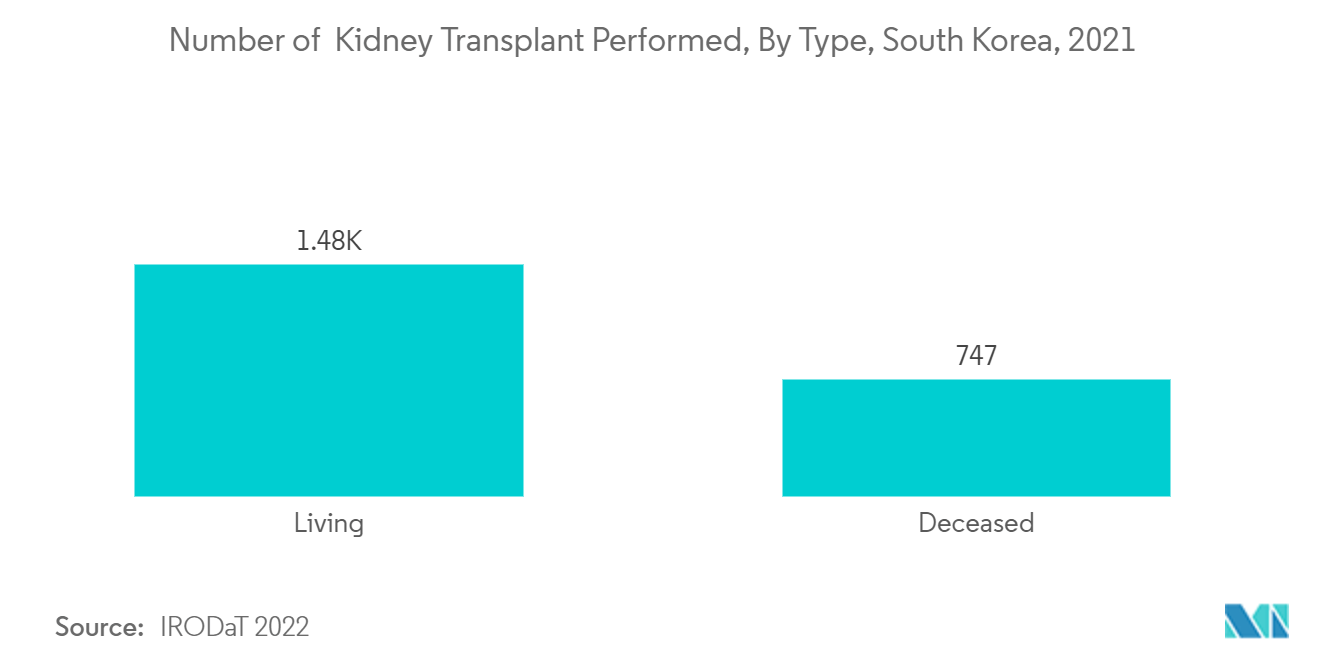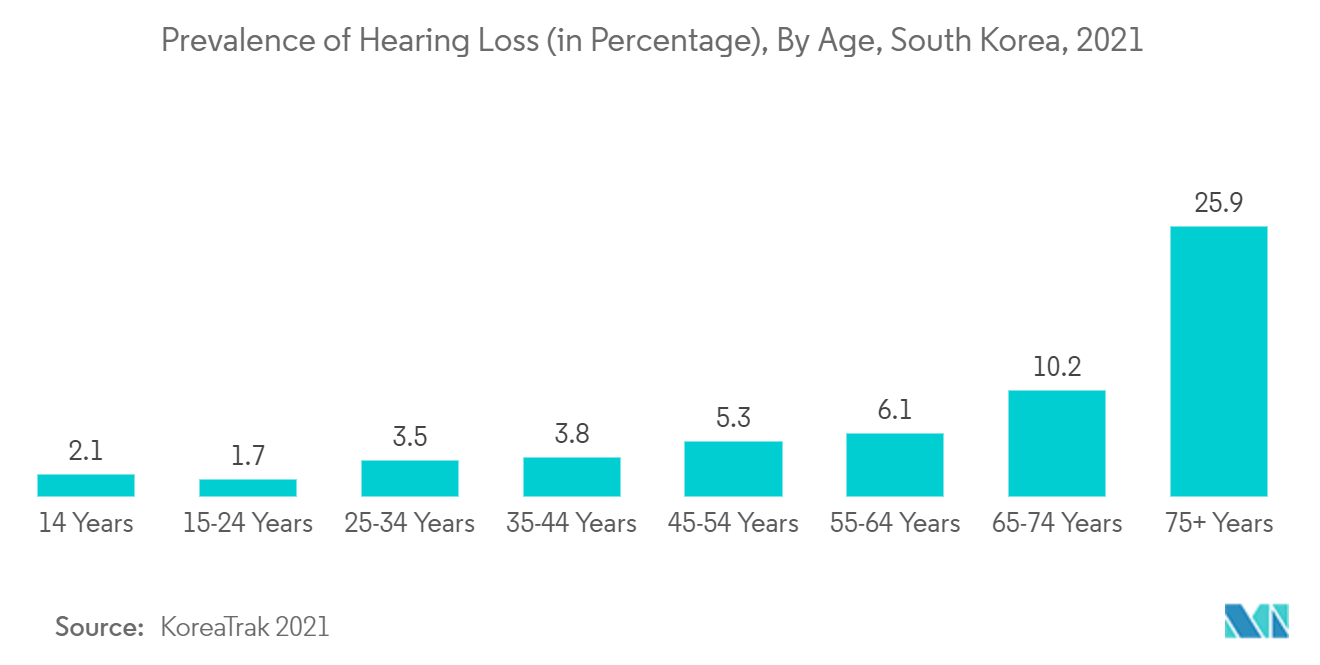Market Trends of South Korea Artificial Organs and Bionics Industry
This section covers the major market trends shaping the South Korea Artificial Organs & Bionics Market according to our research experts:
Artificial Kidney Segment is Expected to Show Better Growth in the Forecast Years
Hemodialysis is a method for removing waste products such as creatinine and urea, as well as free water from the blood when the kidneys are in kidney failure, which is used to clean the patient's blood. The artificial kidney is also called a dialysis machine. The segment is driven by the increasing prevalence of kidney diseases and product launches by the key market players.
According to the study published in Kidney International Supplements in February 2022, chronic renal disease is predicted to affect 6.7% of Korean people aged 19 and up (CKD). In 2020, the prevalence of CKD was 6.7%. In 2020, the prevalence of CKD grew dramatically with age. CKD affects an estimated 27.3% of adults aged 70 and over and 11.1% of those in their 60s. As a result of the increasing prevalence of renal illnesses, which may result in kidney failure and damage, the need for artificial kidneys is projected to promote market expansion during the forecast period.
Furthermore, research has been conducted in South Korea to bring technologically advanced products to the market. For instance, in April 2021, Nephria Bio Inc., a spin-off of the South Korean medical device business EOFlow Co. Ltd, linked a licensing deal with the University to use the two-dimensional material found at Drexel as a filter in a wearable artificial kidney device it is developing. Many of the millions of people suffering from end-stage kidney disease throughout the world may be able to move more freely as a result of this technology, rather than spending hours each week tethered to massive dialysis equipment.
Thus, all the factors mentioned above are expected to boost segment growth over the forecast period.

Cochlear Implants is Expected to Hold a Significant Market Share Over the Forecast Period
Cochlear implants convert sound into electrical signals that restore hearing by replacing damaged parts of the cochlea and transmitting the signals to the brain. People use it as a hearing aid for low to high hearing loss. These cochlear implants are surgically implanted and consist of two parts. The inside component is implanted under the skin, while the other external component is worn at the back of the ear. The significant factors bolstering segment growth are the upsurge in hearing impairment in the growing geriatric population, the risk of hearing loss due to exposure to noise in recreational settings in the younger population, and technological advancements and increased battery life of cochlear implants.
According to the KoreaTrak 2021 survey, hearing loss was reported by 5.9% of people in South Korea, and it impacted 6.6% of adults aged 18 and up and 25.9% of people aged 74 and up. Furthermore, 36.5% of those who reported hearing loss use hearing aids. Thus, with the growing prevalence of hearing loss and rising in the adoption of hearing aids in the country, the demand for cochlear implants is expected to increase during the forecast period.
Additionally, a favorable reimbursement scenario in the country is expected to propel the market's growth. For instance, as per the KoreaTrak 2021 survey, one out of every ten hearing aid owners (11%) had their hearing aids fully subsidized, while nearly half (48%) received partial reimbursement. As a result, all of the above factors, such as the growing burden of hearing loss and the adoption of hearing aids, are expected to drive market growth.


